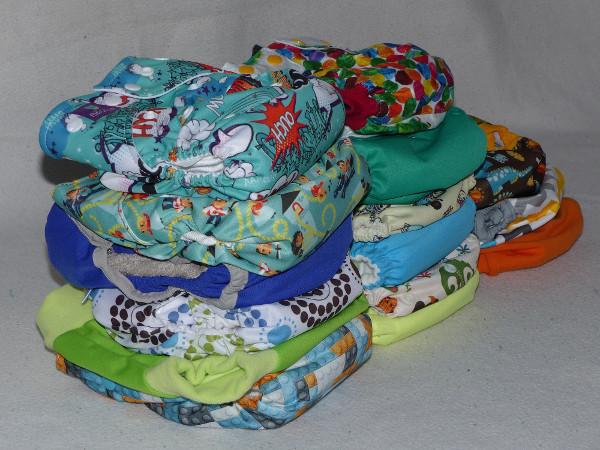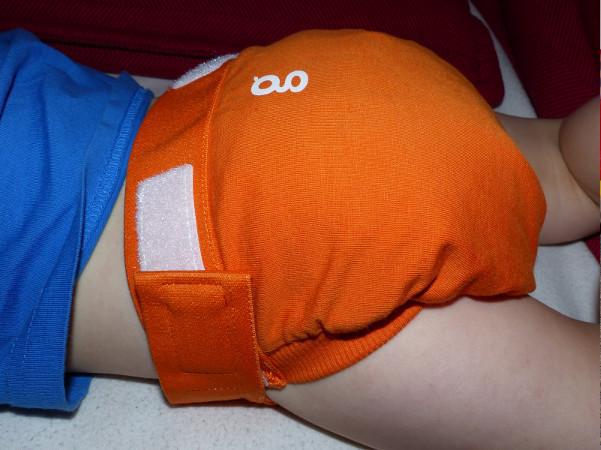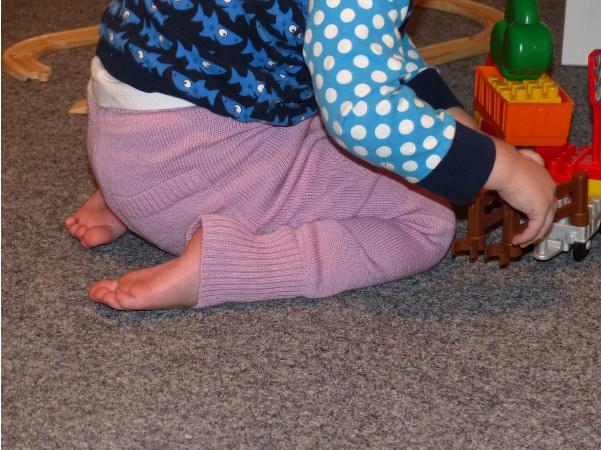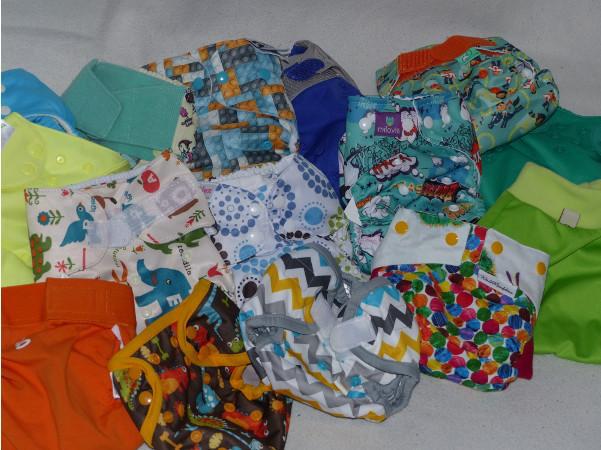6 Advantages of cloth diapers
1.cloth diapers are sustainable

3000 diapers are needed when babies and toddlers up to the age of three, are diapered. That sounds like a lot. Now it must be considered that many children are not yet completely dry at the age of 3, most still need a diaper at least at night, which further increases the number. These 3000 diapers per child make up about 2-3% of the waste in landfills in Germany and account for about 10% of the residual waste(source: Wikipedia). That makes a total of almost 2 tons of diaper waste. Now it must be considered that, depending on the source, diapers take at least 200 years until they are finally completely degraded. As a result, the mountains of waste keep growing. Cloth diapers, on the other hand, can usually be used for two children, so this creates much less trash. The important thing here is that the chair is disposed of in the toilet and not in the residual waste.
2.cloth diapers are cheap
As already described above, cloth diapers can usually be used for two children for the entire diapering time. Since there are very different cloth diaper systems, the price ranges are also correspondingly large. The cheapest system is gauze diapers with wool overpants. Gauze diapers are readily available used, but even new they usually cost around 10€ in a pack of 3. If that is calculated through that every two days is washed and six diapers are used per day, with possibly two inserts and included drying time, then about 30 gauze diapers are needed. This brings me to 100€. In addition, there are two to three overpants per size, which cost about 15€ each. In addition, the money for detergent and diaper fleece, as well as the costs for washing. That brings me to about 150€ a year. All in all, that's just under 600€, although it should be borne in mind that the diapers can be used for a second child and the purchase price of used diapers is significantly lower. With the most expensive system, the All-In-One diapers, lie with a unit price of approx. 30€ clearly higher. Without a dryer, even more diapers are needed here, since the drying time is longer. But even with the AIO's, they can be used for another child. If the cloth di apers are not used for a second child, they can of course be sold, so that part of the initial cost comes back.
The price of a disposable diaper is about 30 cents each. Extrapolated with the 3000 diapers that a child uses in three years, this results in a price of 900€. On top of that, in some communities, there is the cost of the additional waste.
Another price calculation can be found here.
3.cloth diapers are healthy

There are many reasons why cloth diapers are healthy. First of all, they are gentler on the skin than disposable diapers. They contain no or significantly less chemicals (depending on the cloth diaper system) because they do not contain alcohols, perfumes, superabsorbents, etc. Some of the chemistry in cloth diapers comes from materials like PUL (polyurethane laminate) or microfiber. By not using additives, allergic reactions or skin irritations are less likely to occur. If allergic reactions do occur with a material, there are plenty of alternatives. In addition, cloth diapers are breathable, so more air gets to the intimate area and the temperature there does not increase significantly. This is why they are recommended by some pediatricians in case of fever. The temperature aspect is also important for boys, as it prevents the testicles from overheating. In addition, cloth diapers, especially for infants, promote hip development. Many cloth diaper systems are slightly wider than disposable diapers and thus promote what is known as the squat-straddle posture, which is the optimal posture for the hips to hoop, as it gives the joint an even input.
4.cloth diapers promote bonding

Many parents don't like it, cloth diapering. But some parents take more time to diaper when they use cloth diapering. The diapers often look fancy and the motif can be chosen according to your mood. Diapering is a very intimate process. If parents now take time for it and have a positive attitude towards it, the child develops a natural and positive understanding of his excretions and does not learn that they are something bad ("That's disgusting, can't you do that?!", "That stinks again like that",...). As a result, getting dry often succeeds earlier, also because children in cloth diapers feel directly when it is wet. Consciously taking time for a child does not have to happen during cloth diapering and can be the same during diapering with disposable diapers, but is more often observed in parents who diaper with cloth diapers. Also, with these, parents usually diaper earlier, so the child is more likely to feel that their own needs, such as "I want to be clean," are being addressed, thus fostering a bond between parent and child. When the children are older, they can also choose the motifs of the diapers themselves, which also provides more satisfaction on their part and increases cooperation.
5.cloth diapers are fun
Yes, I admit it. I like to put diapers together. Some like to do it very much, others not at all. I belong to the first group. I find it almost meditative. I can come down and switch off. It makes me more relaxed overall, and I don't need to write what that does. And that's just through cloth diapers. I also enjoy looking at diaper designs and yet being tempted again to buy a diaper. I could but... no, mostly I leave it and just admire the motifs. I really think cloth diapers are fun. Just the thought that I can save some trash with each cloth diaper and do something good for nature gives me joy.
6.cloth diapers are individual

There are now a few different cloth diaper systems, from complete systems like the All-In-One di apers (AIO's), to overpants with inserts to three-piece systems (AI3), just to name a few. There are also various materials such as hemp, cotton, bamboo viscose and microfiber that can be chosen as absorbent pads. There is also the option of wool or PUL (polyurethane lamitnate) as a moisture-protective outer layer. Especially with PUL as the outer layer, there are many different designs that can be chosen depending on preference. The different diapers in themselves can be chosen to fit exactly the physique of the child, but also the wishes of the parents (simple system / little washing / ...).
No comments yet.